Soluble chemical stimuli provide environmental cues or signals for the detection and location of prey, predators, and mates in aquatic environments. In jawed fishes, olfaction is mediated by a sensory epithelium that responds to dissolved substances that flow through the nares and across chemosensory receptors that respond to several forms of organic compounds, especially amino acids and nucleotides that are common constituents of natural prey (Kajiura, 2001). Additional compounds such as steroids and prostaglandins are also involved in chemical mediation of social and reproductive behaviours (Hara 1992; Sorenson 1992).
Olfaction (Smell)
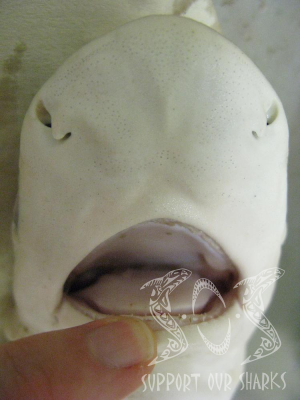 Olfaction in sharks is an
important sense used in the detection and localization of prey. The
sensory epithelium consists of microvillous sensory and ciliated
support cells that form the superficial layer of the olfactory
rosettes contained within large bilateral olfactory cavities on the
ventral surface of the snout (Kleerekoper
1978;
Zeiske et al.
1987). In carcharhinid sharks, primary
water flow over the rosette is produced passively by the pressure
difference between the incurrent and excurrent nares during forward
motion of swimming. Behavioural studies show that occlusion of the
olfactory nares eliminates the ability to locate an odor source (Parker
1914). Olfactory stimuli evoke a
klinotaxis behaviour in the nurse shark where the animal searches
across the stimulus gradient to locate the source, whereas lemon
sharks presented with a point source chemical stimulant respond with
accelerated swimming and a strong rheotaxis behaviour to the
strongest water current (Mathewson and Hodgson
1972; Hodgson and Mathewson 1978;
Kleerekoper
1978).
Olfaction in sharks is an
important sense used in the detection and localization of prey. The
sensory epithelium consists of microvillous sensory and ciliated
support cells that form the superficial layer of the olfactory
rosettes contained within large bilateral olfactory cavities on the
ventral surface of the snout (Kleerekoper
1978;
Zeiske et al.
1987). In carcharhinid sharks, primary
water flow over the rosette is produced passively by the pressure
difference between the incurrent and excurrent nares during forward
motion of swimming. Behavioural studies show that occlusion of the
olfactory nares eliminates the ability to locate an odor source (Parker
1914). Olfactory stimuli evoke a
klinotaxis behaviour in the nurse shark where the animal searches
across the stimulus gradient to locate the source, whereas lemon
sharks presented with a point source chemical stimulant respond with
accelerated swimming and a strong rheotaxis behaviour to the
strongest water current (Mathewson and Hodgson
1972; Hodgson and Mathewson 1978;
Kleerekoper
1978).
Gustation (Taste)
Sharks are widely regarded as having little or no sense of taste, however, current research being conducted at the University of Queensland, Australia (2010) is trying to uncover more regarding this very question. The taste organs of a shark like the Great White are finger-like buds scattered over the lining of the mouth and pharynx, with the greatest density occurring on the soft tissue just behind the teeth. Although most people think of smell and taste as separate senses, they are actually different gradations of the same sensory experience.
How Does Chemoreception Work?
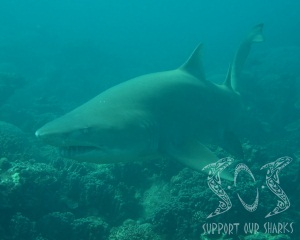 Both
olfaction (smell) and
gustation (taste) depend upon a dissolved sample of
chemical compound fitting into a receptor cell, rather like a key
fits into a lock. When a chemical fits into a receptor, an
electrical change is induced in the cell that is transmitted via the
nervous system to the brain, where the stimulus is interpreted. As
different chemicals have differently shaped molecules, a variety of
shape-specific receptors is required. The 'tightness' of the fit
between chemical and receptor dictates the intensity of sensation.
The major difference between the 'two' sensations is quantity of
chemical sampled: smell is an imprecise sampling of small quantities
of chemical carried by a transporting medium some distance from its
source; taste is a detailed sampling of a large quantity of chemical
in direct contact with chemical receptors. But since both smell and
taste require actual contact between a shape-specific receptor cell
and a dissolved chemical sample, they are merely different degrees
of the same sense, termed chemoreception.
Both
olfaction (smell) and
gustation (taste) depend upon a dissolved sample of
chemical compound fitting into a receptor cell, rather like a key
fits into a lock. When a chemical fits into a receptor, an
electrical change is induced in the cell that is transmitted via the
nervous system to the brain, where the stimulus is interpreted. As
different chemicals have differently shaped molecules, a variety of
shape-specific receptors is required. The 'tightness' of the fit
between chemical and receptor dictates the intensity of sensation.
The major difference between the 'two' sensations is quantity of
chemical sampled: smell is an imprecise sampling of small quantities
of chemical carried by a transporting medium some distance from its
source; taste is a detailed sampling of a large quantity of chemical
in direct contact with chemical receptors. But since both smell and
taste require actual contact between a shape-specific receptor cell
and a dissolved chemical sample, they are merely different degrees
of the same sense, termed chemoreception.
Nares and Nostrils. What’s the Difference?
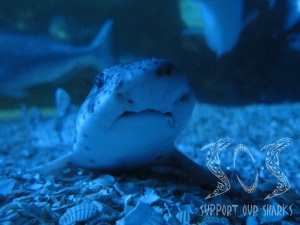 Because a shark's olfactory organs are blind
sacs not in any way connected to the respiratory passageways, their
external openings are termed nares rather than nostrils. While many
bottom-dwelling elasmobranchs have nares adorned with elaborate
flaps (often with grooves connecting the nares to the mouth) that
can control water-movement over the olfactory organs, those of the
White Shark have small, relatively simple flaps. As a Great White
swims, scent-bearing water flows into and out of each olfactory
capsule in an S-shaped pattern. The olfactory organ itself is
roughly spherical and composed of a series of closely spaced,
parallel
lamellae (plates) studded with
chemoreceptors. This arrangement
maximizes the number of receptors that can be packed into the
smallest possible space, greatly increasing sensitivity. The
olfactory sensitivity of sharks in general is nearly legendary,
fostered by countless wide-eyed stories of these predators following
a trail of blood a quarter-mile (four-tenths of a kilometre) or more
to its source. Laboratory tests of shark olfactory acuity have
revealed that even these anecdotal tales pale in comparison to
carefully measured reality. Experiments on isolated olfactory
lamellae of certain skates (family Rajidae) have revealed
astonishingly
low thresholds to chemical stimuli, responding
to concentrations as low as 10-14 moles per litre of water for the
amino acid serine (or about 1 molecule of serine in 1015 molecules
of water). In terms of relative volume, this is comparable to
detecting a golf ball in Loch Ness (Scotland).
Because a shark's olfactory organs are blind
sacs not in any way connected to the respiratory passageways, their
external openings are termed nares rather than nostrils. While many
bottom-dwelling elasmobranchs have nares adorned with elaborate
flaps (often with grooves connecting the nares to the mouth) that
can control water-movement over the olfactory organs, those of the
White Shark have small, relatively simple flaps. As a Great White
swims, scent-bearing water flows into and out of each olfactory
capsule in an S-shaped pattern. The olfactory organ itself is
roughly spherical and composed of a series of closely spaced,
parallel
lamellae (plates) studded with
chemoreceptors. This arrangement
maximizes the number of receptors that can be packed into the
smallest possible space, greatly increasing sensitivity. The
olfactory sensitivity of sharks in general is nearly legendary,
fostered by countless wide-eyed stories of these predators following
a trail of blood a quarter-mile (four-tenths of a kilometre) or more
to its source. Laboratory tests of shark olfactory acuity have
revealed that even these anecdotal tales pale in comparison to
carefully measured reality. Experiments on isolated olfactory
lamellae of certain skates (family Rajidae) have revealed
astonishingly
low thresholds to chemical stimuli, responding
to concentrations as low as 10-14 moles per litre of water for the
amino acid serine (or about 1 molecule of serine in 1015 molecules
of water). In terms of relative volume, this is comparable to
detecting a golf ball in Loch Ness (Scotland).
Importance of Olfaction
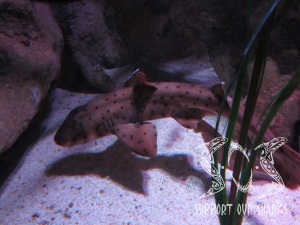 A 1996 paper by neurophysiologists
Leo Demski and R. Glen Northcutt examined the
brain and cranial nerves of the Great White. Demski
and Northcutt found that 14 percent of the White Shark's total brain
mass is composed of the olfactory bulbs. This is over 4.5 times the
proportion Northcutt had previously found in a typical skate and
twice that in the Scalloped Hammerhead (which has huge,
sausage-shaped olfactory bulbs). In fact, Demski and Northcutt point
out that the White Shark has the largest olfactory bulbs relative to
brain mass of any cartilaginous fish examined to date. Since so much
of the Great White's brain is dedicated to olfaction, it seems
reasonable to conclude that scent is highly important to this
species. Shark behaviourist Rocky Strong has speculated that the
strong odors that characterize seal and sea lion colonies may offer
White Sharks a wealth of olfactory stimuli, enabling these predators
to locate concentrations of pinnipeds. A number of field and
aquarium observations indicate that
pheromones (hormonal
secretion used to communicate within species) may play an important
role in shark reproduction by signalling a female's readiness to
mate. In a 1983 paper, Demski and Northcutt reported their discovery
of a cranial nerve in the common Goldfish (Carassius auratus)
that is apparently dedicated to the detection of pheromones; in
their 1996 paper, Demski and Northcutt confirmed that this nerve is
both present and well-developed in the White Shark. A dedicated
pheromone-detection system may enable sexually receptive but widely
separated White Sharks to find one another in the vastness of the
World Ocean.
A 1996 paper by neurophysiologists
Leo Demski and R. Glen Northcutt examined the
brain and cranial nerves of the Great White. Demski
and Northcutt found that 14 percent of the White Shark's total brain
mass is composed of the olfactory bulbs. This is over 4.5 times the
proportion Northcutt had previously found in a typical skate and
twice that in the Scalloped Hammerhead (which has huge,
sausage-shaped olfactory bulbs). In fact, Demski and Northcutt point
out that the White Shark has the largest olfactory bulbs relative to
brain mass of any cartilaginous fish examined to date. Since so much
of the Great White's brain is dedicated to olfaction, it seems
reasonable to conclude that scent is highly important to this
species. Shark behaviourist Rocky Strong has speculated that the
strong odors that characterize seal and sea lion colonies may offer
White Sharks a wealth of olfactory stimuli, enabling these predators
to locate concentrations of pinnipeds. A number of field and
aquarium observations indicate that
pheromones (hormonal
secretion used to communicate within species) may play an important
role in shark reproduction by signalling a female's readiness to
mate. In a 1983 paper, Demski and Northcutt reported their discovery
of a cranial nerve in the common Goldfish (Carassius auratus)
that is apparently dedicated to the detection of pheromones; in
their 1996 paper, Demski and Northcutt confirmed that this nerve is
both present and well-developed in the White Shark. A dedicated
pheromone-detection system may enable sexually receptive but widely
separated White Sharks to find one another in the vastness of the
World Ocean.
How
Does a Shark Follow an Odour?
How, exactly, sharks track odors in the open sea has long been a mystery. Given their remarkable olfactory acuity and apparent zig-zag hunting behaviour, it had traditionally been assumed that sharks could actually compare the relative intensity of scent received by each nare (Kajiura, 2011). It was believed that, by continually adjusting their course according to whichever nare received the strongest whiff, a hunting shark could quickly locate the source of any attractive odor. Some workers pointed out that a major problem with this rather complicated scenario is that seawater dissipates chemicals very rapidly. It was therefore supposed that, at any significant distance from the source of a water-borne chemical, there would be only a few molecules of attractant for every ten or hundred billion molecules of water. Under such conditions, and despite its astonishing olfactory acuity, it seemed extremely unlikely that a shark could detect any concentration gradient that might exist in the relatively short distance between its two nares. Yet in a 1985 paper, Peter Johnsen and John Teeter demonstrated that Bonnethead Sharks (Sphyrna tiburo) actually could detect and respond to concentration gradients between the left and right nares. The Bonnethead is a small species of hammerhead, with a 'hammer' that is only slightly expanded laterally. But it has not yet been demonstrated that non-hammerheaded sharks, such as the Great White, can detect which nare receives the stronger whiff.
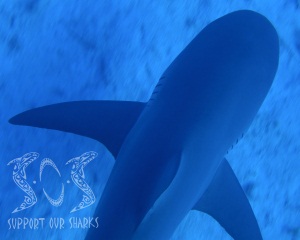 It is more likely that the directional
mechanism of scent tracking in most sharks is refreshingly simple.
When a point source releases chemical compounds into the ocean, the
prevailing currents establish a rapidly dissipating odor corridor. A
shark's lateral line system enables it to detect subtle water
movements. Therefore, when a shark's acute olfactory system detects
an attractive chemical, all it needs to do is turn into the current.
Sooner or later, this will bring a shark to the source of the odor.
But the marine environment is huge and concentrated food sources are
often few and far between, especially in the open ocean. Volatile
chemicals, such as the gases that might be liberated from a decaying
whale carcass, are dispersed through air much more quickly than
through water. An intriguing 1994 paper by Russian sensory
biologists
S.V. Savel'ev and V.P. Cherinkov suggests that at least one
pelagic shark, the Oceanic Whitetip (Carcharhinus longimanus)
is able to employ
aerial olfaction in the search for food. They found
that the close-packed, collagen-strengthened olfactory lamellae of
the Oceanic Whitetip enable this species to trap and detect surface
bubbles that may carry airborne scents. Savel'ev and Cherinkov found
that the loosely-packed, floppy lamellae of the Spiny Dogfish could
not trap bubbles. The authors proposed that, by holding its snout
tip above the surface, an Oceanic Whitetip may be able to detect
airborne scents and locate distant food sources more quickly than
many potential competitors.
It is more likely that the directional
mechanism of scent tracking in most sharks is refreshingly simple.
When a point source releases chemical compounds into the ocean, the
prevailing currents establish a rapidly dissipating odor corridor. A
shark's lateral line system enables it to detect subtle water
movements. Therefore, when a shark's acute olfactory system detects
an attractive chemical, all it needs to do is turn into the current.
Sooner or later, this will bring a shark to the source of the odor.
But the marine environment is huge and concentrated food sources are
often few and far between, especially in the open ocean. Volatile
chemicals, such as the gases that might be liberated from a decaying
whale carcass, are dispersed through air much more quickly than
through water. An intriguing 1994 paper by Russian sensory
biologists
S.V. Savel'ev and V.P. Cherinkov suggests that at least one
pelagic shark, the Oceanic Whitetip (Carcharhinus longimanus)
is able to employ
aerial olfaction in the search for food. They found
that the close-packed, collagen-strengthened olfactory lamellae of
the Oceanic Whitetip enable this species to trap and detect surface
bubbles that may carry airborne scents. Savel'ev and Cherinkov found
that the loosely-packed, floppy lamellae of the Spiny Dogfish could
not trap bubbles. The authors proposed that, by holding its snout
tip above the surface, an Oceanic Whitetip may be able to detect
airborne scents and locate distant food sources more quickly than
many potential competitors.
Can Sharks Smell
in Air?
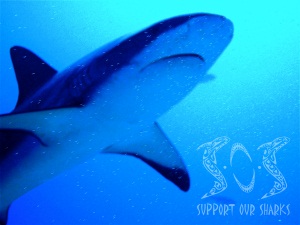 One of the most curious behaviours of the White
Shark is a habit of raising its head above the water surface by up
to 3 feet (1 metre). As visually-biased creatures, people had long
assumed that a Great White performing this un-fishy act was raising
its eyes above the surface to visually inspect potential meals, such
as hauled out pinnipeds (seals and sea lions) or even humans on boats.
This is a chilling thought. But, given the profound refractive shift
between water and air, I doubt that the White Shark's lens-moving
muscles could accommodate strongly enough to enable the animal to
see clearly. Yet
Demski and Northcutt's study of brain organization in the
White Shark revealed that this species has particularly well
developed olfactory bulbs. Perhaps, like the Oceanic Whitetip, the
Great White can detect airborne scents, enabling it to locate large
concentrations of odoriferous food, such as a floating whale carcass
or pinniped rookery. Since wind is slowed by friction with the ocean
surface, air movement is slower at the air-water interface than
above it. By raising its head several feet out of the water, a White
Shark may be better able to detect airborne scents that could
indicate a rich source of food in the otherwise featureless expanse
of the open ocean.
One of the most curious behaviours of the White
Shark is a habit of raising its head above the water surface by up
to 3 feet (1 metre). As visually-biased creatures, people had long
assumed that a Great White performing this un-fishy act was raising
its eyes above the surface to visually inspect potential meals, such
as hauled out pinnipeds (seals and sea lions) or even humans on boats.
This is a chilling thought. But, given the profound refractive shift
between water and air, I doubt that the White Shark's lens-moving
muscles could accommodate strongly enough to enable the animal to
see clearly. Yet
Demski and Northcutt's study of brain organization in the
White Shark revealed that this species has particularly well
developed olfactory bulbs. Perhaps, like the Oceanic Whitetip, the
Great White can detect airborne scents, enabling it to locate large
concentrations of odoriferous food, such as a floating whale carcass
or pinniped rookery. Since wind is slowed by friction with the ocean
surface, air movement is slower at the air-water interface than
above it. By raising its head several feet out of the water, a White
Shark may be better able to detect airborne scents that could
indicate a rich source of food in the otherwise featureless expanse
of the open ocean.
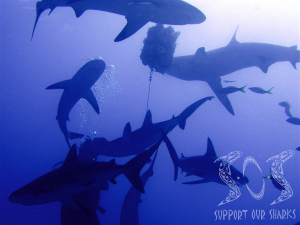 Can
Sharks Taste?
Can
Sharks Taste?
To what extent the Great White relies on its sense of taste is also a matter of conjecture. There are a few, scattered reports of other sharks apparently rejecting food on the basis of taste, but this has not been tested. In a 1980 paper, biologists Jack Ames and G. Victor Morejohn reported a perplexing mystery: at least 59 (9%) of all of the Sea Otter (Enhydra lutris) carcasses that washed up on California beaches between 1968 and 1979 had clear evidence of having been bitten by Great Whites: fragments of White Shark teeth embedded in the open wounds. The phenomenon of shark bitten Sea Otter carcasses had been known for decades. Yet no Sea Otter had ever turned up among the stomach contents of White Sharks. Why not? In his excellent 1976 book, artist-author Richard Ellis speculated that, since Sea Otters are members of the weasel family (Mustelidae) — a group which includes skunks and many other strong-smelling relatives — perhaps the Otters emitted an odor that is distasteful to White Sharks. This certainly seemed reasonable at the time. But new evidence suggests a more intriguing solution to this mystery.
